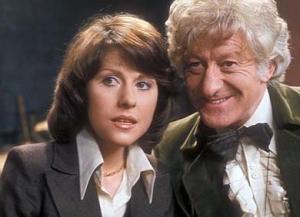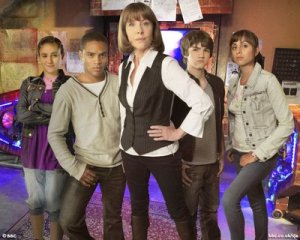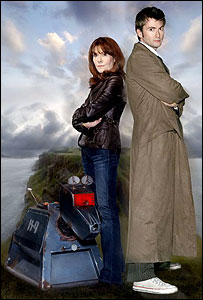My father, Paul Oliver Pogue, died a year ago May 14. I loved him and knew him as well as I could, or at least as well as anybody could. He had this thing for distance.

A typical moment: Katrina and I visited home some months after Armand’s birth, for what would be his first meeting with his grandfather. My father suffered from emphysema and didn’t leave the house much, with a breathing tank near him most of the time. This didn’t actually hold up his emotional involvement, largely because he was not exactly what you would call emotionally engaged even before he fell ill. Getting five words of emotion out of him was a rare thing.
Anyway, he sort of looked at Armand and said “He seems to be a healthy baby,” which is what passes for approval from him. The afternoon went on, Kat and I talked to my mom, ham and mashed potatoes were eaten, that sort of thing.
At some point Armand was sitting upright in the doorway to the kitchen, just looking around with that lost-tourist thing infants often do, and Dad walks up to him. Armand looks up at him. Dad leans down a little bit, as much as he could do, anyway, and sort of smiles. In the next room, all of us stood stock still, as if a breath would ruin the moment. Someone leaned over and whispered, in their best National Geographic narrator voice, “Let’s watch as the eldest alpha male of the monkey tribe recognizes his newest offspring and acknowledges it as a member of the clan.”
The effort to which we went to avoid cracking up was EPIC.
Persons with much more knowledge than me – by which I mean “doctorates and/or years of direct experience” – have speculated that he had a form of undiagnosed Asperger Syndrome. Maybe he did. It would certainly make a lot of things make a lot more sense.
Whatever the case, he was certainly a distant sort. I’ve learned a lot about my father in the last year. Not because it was secret, per se, but because he just didn’t seem inclined to chat much. He was a talkative person about a lot of things, but not about himself –- or, in fact, his family. Once I asked him what his own father did for a living and it took him a couple of days to come up with an answer.
Much of what I’ve learned about him comes from faded photos from the 1950s and 1960s, surreal images from the ages of “Rebel Without A Cause” and “Mad Men” and “The Man in the Gray Flannel Suit.”

(Okay, now I know where my whole “smirk while standing mischievously” pose comes from.)

(Seriously, military uniforms of the era make ANYONE look cool.)
And his military discharge papers, from which I learned more factual information about him in one sheet of paper than I did from him in an entire lifetime. He was a combat engineer in the 299th Combat Engineer Battalion from 1954 through 1957, secondary specialty “heavy equipment driver.”
The 299th was a highly regarded unit; their unofficial motto was “First on Omaha,” due to the dubious yet extremely awesome distinction of being the first group to land on Omaha Beach on D-Day, demolishing barriers while being shot at by Nazis. The “combat” part of “combat engineer” is no exaggeration.
In the 1950s they were assigned to Hoechst, Germany, building bridges and roads, which is when my father served. The 299th’s primary vehicle throughout their German years was a 2-ton M-series dump truck, which means the vehicle my father drove was probably something like this:

Being a child of the 80s and still just a little bit of the sort who thought his dad was ten feet tall, of course, my mental image of what I’d like to think he drove looks something more like this:

(Little fun fact for you: Ward Cleaver, dad to the Beaver, served in WWII as one of the combat engineer’s close cousins, the Navy Seabee. Yes, I just totally invoked “Leave it to Beaver” continuity. Shut up.)
And here’s a fun pic of what service actually WAS like:

None of this is anything I learned from my father, mind you; he never talked about his military service. Not out of any reticence regarding the military, but rather that he pretty much never talked about himself. Which is one habit of his I, er, never quite picked up. I think the most I ever got out of him was that he did several years in Germany.

But look at those years! My father was very much a child of the 1950s. Even the photographs of him in the Hoechst streets evoke a certain James Dean feel, a young man trying his best to embrace what he felt was cool.

And check out the horse! (Seriously, am I the only one who thinks he looks like Rick Astley here?) No wonder his youngest grandson, Armand, seems so comfortable on horseback. Was there just something about that time that made cool come by nature? And I don’t say this because as a kid I thought my dad was uncool; rather, my beloved father was thoroughly and completely uncool by any objective measure. By the time I was growing up in the 1980s, he was a different kind of 1950s archetype, equal parts Ward Cleaver and the Man in the Grey Flannel Suit. I don’t know if a lifetime as a loan branch manager was particularly fulfilling, but it paid the bills, and he came from a generation that expected to stick with the same job all their lives, which was why he was so surprised to get laid off after 29 years.
(I once melted down pretty heavily after getting laid off from a job I liked. I’m a bit ashamed to say I never talked to Dad about it.)
To this day there’s still a lot I don’t know. I don’t know why he became Catholic, for instance; I mean, I know he converted after meeting my mother, but I don’t know if it was just that. He was a remarkably dedicated convert, certainly; he was also relentlessly intelligent, an uncanny mind that I’ve rarely seen matched.
I was not as devout a Catholic as he was, not after college. Not that this stopped us from talking out (read: arguing) religion at the dinner table, usually during holiday gatherings. Everyone else knew things had gotten out of hand when we started pulling out Greek or Aramaic on each other. (I knew maybe five words in each language, but we both sure knew how to wield them.)
But when I was young I was very Catholic, to the point I planned on becoming a priest. When I was a pre-teen, maybe 11 or 12, I headed to church every Saturday morning with him. Like I said, he was a ridiculously devout churchgoer. I was fairly devout myself, but it was also the only time I ever really had to myself with him. We always ended up reading the newspaper at McDonald’s afterwards, and I would usually hustle him for a few quarters for the arcade at the next-door mall, but mostly I remember those quiet mornings over Egg McMuffins, when we would likely as not exchange maybe five words unless there was something particularly interesting in the paper. Still, they’re some of my best memories with him.
He played chess, and quite well. I only beat him once over the course of ten years playing. When he died, the only possession of his I really wanted was the chess set he taught me on. (I ended up getting more than that, because SOMEONE had to claim all those history books, but the chess set is the real emotional hook to me.)
And he could write, oh, god, he could write. I remember once my old mentor, Peg Richards, speech and drama teacher at the high school, directed a stage version of “Grease” that received a certain amount of negative attention from those who felt the subject matter was inappropriate for a high school. They suggested that Peg should be punished for going too far. They made their concerns known in the local paper. Firing, letters of apology, and perhaps a public tarring and feathering were mentioned. (Mind you, this is small-town Indiana 1989, so one of her sins in their eyes was using a play with the dialogue “knocked up.”)
My father, whom I had previously pegged as the squarest person in the universe, disagreed. Rather strongly, in fact. He respected Peg greatly and was very proud of my association with her. Not that I could tell from the way he acted most of the time. But he penned a letter to the local newspaper in her defense. It was perfectly polite and cordial, written in the same clipped tone he used when he spoke, but at the same time merciless, relentless and an utter public disassembling of every single point they had made. I mean, this thing was brutal; it was the paper-and-ink equivalent of Ward Cleaver suddenly getting fed up and taking out the town bully with a single haymaker. Nobody ever made an issue of the “Grease” matter again.
I had no idea he had done it until it appeared in the paper. That day, Peg came up and hugged me because she thought I’d written it. That she thought THAT letter had come from MY pen remains one of the four or five greatest compliments of my life.
Here’s the thing, and sometimes it takes my old friends to remind me: My father genuinely cared about his family. That’s the flip side of the Gray Flannel Suit archetype – putting aside all your desires and maybe even your dreams and putting another group of people’s welfare entirely ahead of your own. He was always up for a game of wiffle ball or some such in the evenings, sometimes with the neighborhood kids, and usually did a pretty good job of not showing how completely wiped out he was. I looked forward to his two week-long vacations every year because it meant doing something with Dad every day. In my youth it didn’t occur to me that maybe his own personal desire had more to do with “lots of sleep.” But he was still there, taking us out to something or other every day, whether it be swimming or a day at the park. He was always there.
Emphysema got him in the end. The other flip side of the 1950s cigarette-infused coolness.
The last time we spoke was a week before his death. I went into the conversation knowing full well it would be the last, and I’m quite certain he knew it too. Partially this was a pragmatic approach; he was in a VA palliative care unit and could conceivably die at any time, including five minutes after I left. But I also approached it rationally; my father was not a talkative man, nor did I expect him to be. Perhaps that’s one of the reasons we got along so well; I’ve never expected much emotion out of him and wasn’t liable to be disappointed by wanting something that wasn’t going to come.
He said three things that day – First he asked me for the newspaper, then asked me to help him figure out a word in the crossword puzzle. (Ironically, the word was “elder.”) I’m told he hadn’t done the puzzle in quite a while, so maybe things were going pretty well that day.
In the course of about two hours, this passed for serious conversation. It was like those old days after church in McDonald’s, childhood moments I hadn’t thought about in years.
Before I left, I updated him on how the kids were doing, and confided that I’d always thought he had been a good dad, even if I hadn’t always said so. And that one of my hopes as a parent was that I could live up to be anywhere near as good as he and my mother had been.
He gave me what passes for a smile from a dying man and said his last words to me, in a ragged tone through the breathing mask, “You did fine.”
I’ve always wondered about that phrasing, particularly the past-tense part. My father was a lot more mystically inclined and in tune with things than he often let on. Not for the first time in my life, but as it turned out, for the last, I was left to ponder exactly what it was my father knew that I didn’t.
“You did fine” in itself would actually be a remarkable thing on its own, but the last thing my father ever did in my presence really surprised me. When Kat hugged him and said goodbye, he responded with a crooked smile and that funny hipster gesture that’s half thumbs-up and half pointing-finger-like-a-gun. I didn’t think Dad knew that gesture even existed, let alone that he would actually do it. I still don’t actually know what he meant, except that apparently he liked Katrina a whole lot.
Most importantly, I’m grateful it ended on the note it did. I said what I needed to say and he said what he had to say, and I don’t think there was any unfinished business between us. I’ve known too many people who ended things with too much unresolved not to know how valuable that is.
I always thought my dad was boring. And he was. Boring, uninteresting, gray flannel, uncool, blasé and when we needed him he was ALWAYS THERE. If I turn out anywhere near as boring and uncool as him I’ll consider myself to be a successful father.
Paul F. P. Pogue, May 13, 2011

Posted in my father's son






























